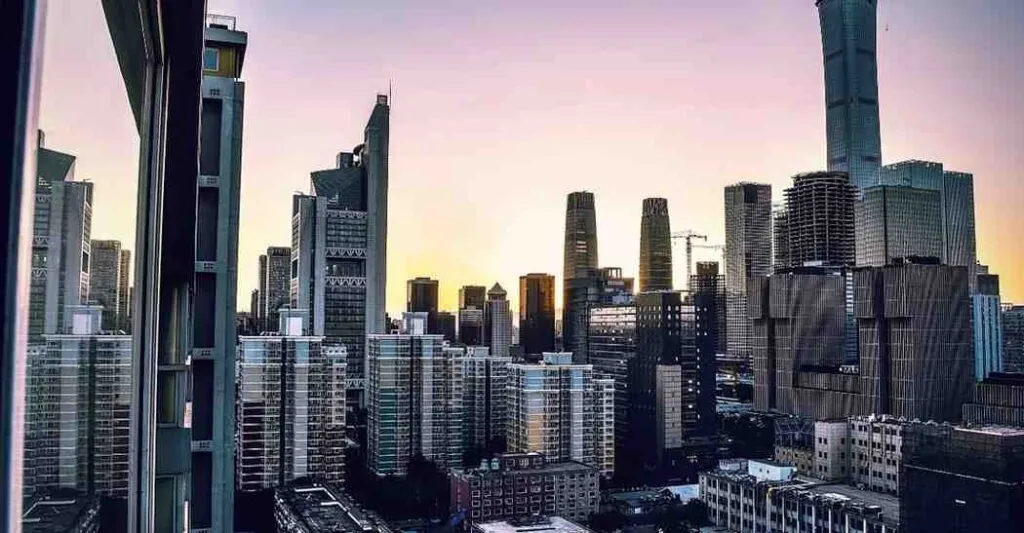Overcoming High-Rise Development Hurdles: Creative Strategies for Success – This blog post examines high-rises as symbols of modernity and progress, highlighting their significance in urban planning worldwide. It discusses the challenges faced in their development, innovative solutions that have emerged, successful case studies, and emerging trends in the industry.
Table of Contents
Setting the Scene for a Vertical World
High-rise developments are transforming urban landscapes across the globe. As cities expand and populations grow, the need for vertical growth becomes increasingly evident. These towering structures not only symbolize economic prosperity but also respond to the pressing demand for space in densely populated areas.
Real estate developers and urban planners must consider a myriad of factors when designing these buildings. High-rises require careful planning to ensure they meet the needs of residents and businesses while blending seamlessly into the urban environment. This involves addressing key challenges such as environmental impact, infrastructure, and regulatory hurdles.
Understanding these challenges is crucial for anyone involved in high-rise development, as it lays the groundwork for exploring innovative solutions. In the sections that follow, we will unpack the complexities of high-rise construction and highlight best practices that ensure sustainable and successful projects.
Challenges of High-Rise Development
Environmental Impact and Sustainability
One of the most pressing challenges facing high-rise developments is their environmental impact. These massive structures often demand significant energy resources, from construction to maintenance. The ecological footprint of a high-rise can be considerable, making sustainability a critical concern for developers.
Strategies to mitigate this impact include incorporating energy-efficient technologies and materials. Developers are increasingly turning to renewable energy sources, such as solar panels and wind turbines, to power their buildings. Additionally, the use of sustainable building materials and techniques can reduce the environmental footprint of high-rises.
While these measures are beneficial, they can also increase construction costs. Balancing sustainability with financial feasibility is a challenge that requires careful planning and innovation. By prioritizing environmentally friendly solutions, developers can contribute to a greener future while meeting the demands of urban growth.
Infrastructure and Utilities
The infrastructure requirements of high-rise buildings are another significant challenge. These structures necessitate robust support systems, including water supply, sewage, transportation, and energy. Ensuring reliable and efficient utilities is essential to the success of high-rise developments.
Urban planners must work closely with utility providers to integrate these systems seamlessly into the existing infrastructure. This often involves upgrading and expanding current networks to accommodate the demands of high-rise buildings. The complexity of these projects can lead to delays and increased costs if not managed effectively.
Innovative solutions, such as smart grid technology and advanced utility management systems, offer promising ways to address these challenges. By leveraging cutting-edge technologies, including the Potain self-erecting tower crane, developers can create an efficient and resilient infrastructure that supports the needs of high-rise residents and businesses.
Regulatory and Zoning Hurdles
Navigating the regulatory landscape is a challenge that all high-rise developers must face. Building codes, zoning laws, and safety regulations vary widely between locations, adding complexity to the development process. Compliance with these regulations is essential to ensure the safety and legality of high-rise projects.
Developers must work closely with local authorities to secure the necessary permits and approvals. This often involves negotiating with multiple stakeholders, including government agencies, community groups, and environmental organizations. The bureaucratic process can be time-consuming and costly, delaying project timelines.
To overcome these hurdles, developers should engage with regulatory bodies early in the planning process. Building strong relationships with local authorities and demonstrating a commitment to compliance and community interests can streamline approvals and reduce obstacles.
Innovative Solutions
Green Building Technologies
In response to the environmental challenges of high-rise development, green building technologies have emerged as a powerful solution. These technologies focus on reducing energy consumption, minimizing waste, and promoting sustainability in the construction and operation of high-rise buildings.
Features such as high-efficiency HVAC systems, low-emissivity windows, and energy-efficient lighting are becoming standard in modern high-rises. Additionally, the integration of renewable energy sources, such as solar panels and geothermal systems, can further enhance the sustainability of these structures.
By adopting green building technologies, developers can reduce the environmental impact of their projects and appeal to environmentally conscious consumers. These technologies not only contribute to a healthier planet but also offer long-term cost savings through reduced energy expenses.
Vertical Urban Planning
Vertical urban planning is a forward-thinking approach to high-rise development that emphasizes efficient land use and integrated urban ecosystems. This strategy involves designing high-rises that accommodate a mix of residential, commercial, and recreational spaces within a single structure.
By fostering a sense of community within high-rise buildings, vertical urban planning can reduce the need for sprawling urban expansion. This approach promotes walkability, reduces traffic congestion, and enhances the overall quality of life for residents.
Developers who incorporate vertical urban planning principles into their projects can create vibrant, self-sustaining communities that address the challenges of urban density. By reimagining the traditional cityscape, these developments offer a glimpse into the future of sustainable urban living.
Community Integration Strategies
Successful high-rise developments prioritize community integration, ensuring that they enhance the local environment and benefit surrounding neighborhoods. This involves engaging with community stakeholders throughout the planning and construction process to address concerns and incorporate feedback.
Strategies for community integration may include providing public amenities, such as parks, community centers, and retail spaces, within high-rise developments. Additionally, developers can collaborate with local organizations to support cultural initiatives and social programs that enrich the community.
By fostering strong relationships with local residents and organizations, developers can create high-rise projects that are embraced by the community. This collaborative approach not only enhances the appeal of high-rise buildings but also contributes to the overall success of the development.
The Future of Skyline Development
Emerging Trends
The future of high-rise development is marked by exciting trends that promise to reshape urban landscapes. One significant trend is the rise of smart buildings, which leverage the Internet of Things (IoT) and artificial intelligence (AI) to optimize building operations and enhance the occupant experience.
Smart buildings can automatically adjust lighting, heating, and cooling systems based on occupancy and environmental conditions, improving energy efficiency and comfort. Additionally, advanced sensors and data analytics enable predictive maintenance, reducing operational costs and enhancing building performance.
Another emerging trend is the integration of mixed-use spaces within high-rise developments. By combining residential, commercial, and recreational areas, these projects create vibrant, self-sustaining communities that reduce the need for urban sprawl.
Predictions for the Industry
Looking ahead, high-rise development is poised for continued growth and innovation. As urban populations expand, the demand for vertical living solutions will drive the construction of taller, more advanced skyscrapers.
Developers will increasingly prioritize sustainability and community integration, creating high-rise projects that contribute to the overall well-being of cities. By leveraging cutting-edge technologies and innovative planning strategies, the high-rises of the future will set new standards for efficiency, resilience, and livability.
Conclusion
Now that we have explored the benefits, challenges, and best practices of high-rise development, it is clear that this approach offers immense potential for sustainable urban living. By embracing vertical urban planning principles and incorporating community integration strategies, developers can create vibrant communities that enhance the quality of life for residents.

Pradeep Sharma is a author the mind behind Techjustify, where I craft insightful blogs on technology, digital tools, gaming, AI, and beyond. With years of experience in digital marketing and a passion for tech innovation, I aim to simplify complex topics for readers worldwide.
My mission is to empower individuals with practical knowledge and up-to-date insights, helping them make informed decisions in the ever-evolving digital landscape.




